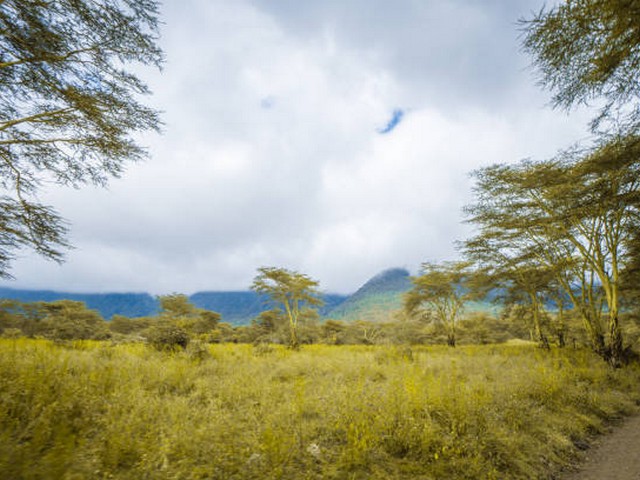Kilimanjaro’s Role in the History of African Exploration
Introduction: The Majestic Mountain of Mystery and History
Mount Kilimanjaro, standing as a beacon of wonder in Tanzania, is not just Africa’s tallest peak but also a symbol of exploration and discovery. The mountain’s grandeur has captivated the hearts of adventurers, geographers, and historians alike, playing a pivotal role in the story of African exploration. At the Kilimanjaro Centre for Trekking and Ecotourism (KCTE), we cherish this iconic mountain’s legacy and invite you to embark on a journey through the annals of time to uncover how Kilimanjaro shaped the course of exploration across this vast continent.
The Call of Kilimanjaro: Early Exploration and Cultural Significance
The Indigenous Peoples and Early Myths
Long before Kilimanjaro was a known landmark to the outside world, it held deep spiritual and cultural significance for local tribes such as the Chagga and the Maasai. These indigenous peoples revered the mountain as a sacred place, believed to be the home of their gods. The early myths and respect for the mountain contributed significantly to its mystique and the curiosity it sparked among later explorers.
European Eyes on the Prize
The first recorded sighting by Europeans was in the 19th century when missionaries and explorers began penetrating the interior of Africa. Johann Ludwig Krapf, a German missionary, first reported the snow-capped mountain in 1848, a sighting met with skepticism back home. This disbelief only fueled the desire among explorers to witness and study Kilimanjaro for themselves, marking the beginning of its role in the broader narrative of African exploration.
The Scientific and Geographical Impact of Kilimanjaro
Charting the Unknown
Kilimanjaro quickly became a focal point for scientific research. Geologists, ecologists, and geographers were drawn to its unique ecosystems and geological features. The mountain’s varying climate zones, from its lush rainforests to its alpine deserts and finally the icy summit, provided an exceptional natural laboratory.
A Benchmark for Environmental Studies
The extensive studies conducted have helped scientists understand not just Kilimanjaro but also the environmental patterns of East Africa. Research on its retreating glaciers has also contributed to the global discourse on climate change, making Kilimanjaro a symbol of the urgent need for environmental conservation.
The Adventure of Ascending Kilimanjaro
The Lure of the Summit
The quest to reach the summit of Kilimanjaro has lured countless adventurers. The first successful summit is credited to Hans Meyer and Ludwig Purtscheller in 1889. Since then, Kilimanjaro has become a must-visit for trekkers worldwide, eager to conquer its heights and experience the breathtaking views atop its peak.
Kilimanjaro Today: A Trekker’s Paradise
At KCTE, we specialize in creating unforgettable climbing experiences on Kilimanjaro. The routes we offer, such as the Marangu, Machame, and Lemosho, are designed not only to challenge trekkers but also to immerse them in the natural beauty and serenity of the mountain. Each step on these historic trails is a step through history, where the spirit of exploration burns bright.
Kilimanjaro in Literature and Popular Culture
Inspiring Artists and Writers
Kilimanjaro has inspired countless works of art, literature, and film, perhaps most famously being referenced in Ernest Hemingway’s short story, "The Snows of Kilimanjaro." The mountain’s mystique and challenge continue to ignite the imaginations of creative minds around the world, further cementing its place in the annals of exploration history.
A Symbol of Resilience and Beauty
As a subject in photography and documentaries, Kilimanjaro has helped bring the wonders of African landscapes to international audiences, promoting understanding and appreciation of the continent’s natural heritage.
Preserving Kilimanjaro’s Legacy
Conservation Efforts
The footfalls of millions of trekkers have not been without impact on Kilimanjaro’s delicate ecosystems. At KCTE, we are committed to sustainable tourism practices that help preserve the beauty and integrity of the mountain for future generations. Our initiatives support local communities and contribute to ongoing conservation efforts, ensuring that Kilimanjaro remains a source of natural beauty and inspiration.
The Role of Education
By educating our clients about the mountain’s environmental and historical significance, we foster a deeper appreciation and responsible trekking practices. We believe that informed trekkers are the best advocates for the conservation of Kilimanjaro.
Conclusion: Your Call to Adventure
Kilimanjaro is more than just a mountain; it’s a journey through the history of exploration, a testament to the enduring spirit of human curiosity and determination. At the Kilimanjaro Centre for Trekking and Ecotourism (KCTE), we offer more than just climbs; we offer transformative experiences that connect you with the heart of African exploration.
We invite you to book your Kilimanjaro climbing adventure with us and tread the paths once walked by the giants of exploration. Stand atop this majestic mountain and gaze out over the land that has inspired adventurers for centuries. Your journey into history awaits!
FAQs About Climbing Kilimanjaro
Q: How difficult is it to climb Kilimanjaro?
A: Climbing Kilimanjaro is a challenging but achievable goal for most healthy individuals. Proper preparation, physical conditioning, and choosing the right route can significantly enhance your climbing experience.
Q: What is the best time of year to climb Kilimanjaro?
A: The best times to climb Kilimanjaro are during the dry seasons, from June to October and from December to March, when the weather is most favorable.
Q: How long does it take to climb Kilimanjaro?
A: It typically takes about 5 to 9 days to climb Kilimanjaro, depending on the route. Longer itineraries allow better acclimatization and increase your chances of reaching the summit.
Q: What should I pack for a Kilimanjaro trek?
A: Essential items include thermal clothing, a warm sleeping bag, hiking boots, a waterproof jacket, sun protection, and a day pack. A detailed packing list will be provided when you book your climb with KCTE.
Embark on your adventure with Kilimanjaro Centre for Trekking and Ecotourism (KCTE) and be part of the glorious history of Kilimanjaro!




